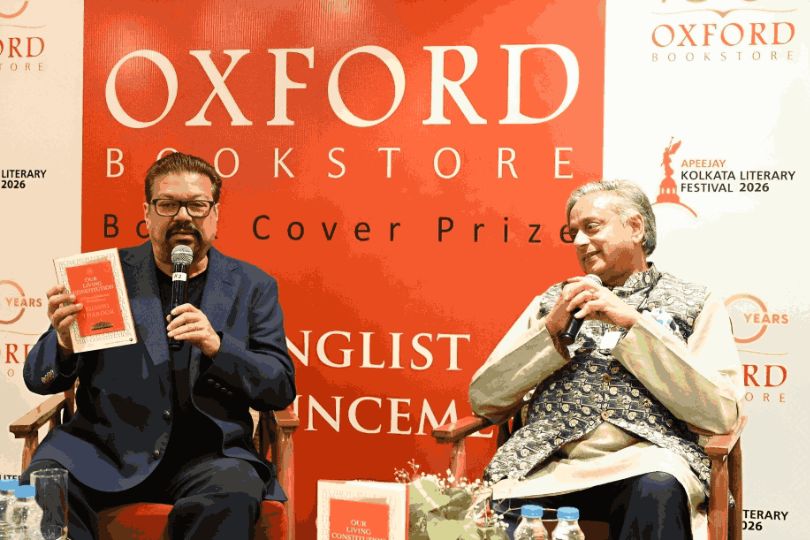Interview With Saurabh Mittal, Co- Founder, Maple Press & Publishing.com
on Jun 08, 2022

Saurabh is an Operations Research Engineer from an Ivy-League University, Cornell, USA, and an MBA graduate of the flagship management programme of the Indian School of Business (ISB). He is the Founder-Publisher of India's leading children’s book publisher, Maple Press, and Pblishing.com, a crowd-driving publishing platform. Coming from a family with a background in the book publishing space, he started working at the age of 21 and, for the last half-decade, has been able to carve out a niche for both his companies. His companies have published over 1000+ titles and sold more than 10 million books since their inception. Saurabh is an avid reader and investor when he is not donning the hat of a founder-publisher.
Frontlist: Maple Press has been associated with various social welfare organisations. How would your alliance with such organisations be advantageous to promoting the significance of literature in young generations?
Saurabh: Maple Press started to make good quality children’s books accessible to millions who currently cannot afford them. Social welfare organisations do not have big budgets, and therefore, for them, procuring good quality and relevant content at affordable prices has always been a challenge. As more than 50% of our books are priced under Rs.100, it makes it easy for such organisations to do more with less.
Frontlist: Since Maple Press publishes books for different age groups up to 12 years, how can you persuade kids to read more during the summer vacation? Do your books have any special features to attract children to read more?
Saurabh: Maple Press’s current catalogue has over 1200+ titles that cover all age groups. Recently, we have been focusing mainly on story books and activity books, which can keep children engaged for hours during their vacation. In the last year, we have come out with more than 200+ new books in these categories, which are easily accessible through e-commerce portals and are priced very competitively. The content in our books is lucid, and most kids will be able to read them on their own. The vivid illustrations have been designed very painstakingly and add to the imaginative capabilities of kids. The activity books have been created in a way that they ensure continuous intrigue and learning at the same time.
Frontlist: Children are very adamant about reading physical books as they prefer to engage in technology more. To consider this challenge: how can we develop their reading habits among them?
Saurabh: Screen time for children has increased tremendously in the last two years with the closure of schools and online classes. We believe that parents can only keep their kids away from screens. Engaging with kids directly can overcome this challenge. Reading out of physical books, helping the kids solve activities and colouring in can help get kids engaged in the physical world. Finally, we believe that kids learn the most by observation. This may be a little difficult if parents reduce their screen time, but kids will also eventually do the same.
Frontlist: Why did you choose to publish books for different age groups up to 12 years old in the first place?
Saurabh: There was a requirement for good quality content for kids at affordable prices in India. While most of the books that had good content (text and illustrations) were imported and therefore expensive, on the other hand, the locally made affordable books were not up to standard with low-quality illustrations and grammatical inaccuracies.
Frontlist: What kind of books are most preferable among small kids? What new opportunities can we bring to promote Children's Literature?
Saurabh: Our retold illustrated stories from the Hindu Religion, such as the Ramayana, Mahabharata, Ganesha, Krishna, and Hanuman, have been very well received. Parents want their kids to be aware of our folklore, religion, and history. We are also seeing an increased demand for activity books that help with cognitive development and help keep kids engaged.
Frontlist: Which genre has risen to prominence in recent years, and how has it changed people's reading habits?
Saurabh: I think for us, the early learning segment has done well in the last couple of years. Be it writing books, activity books, or colouring books, demand for them has shot up due to a few factors – increased "at-home" time due to the shut down of pre-primary schools and daycare centers; an increased focus on off-screen time; and improved accessibility because of e-commerce growth.
Frontlist: EdTech has revolutionised how people learn. Which is the best way to encourage young people to read more effectively: physical books or e-books? Please share your thoughts.
Saurabh: It depends. There is no better way. We believe both the mediums are equally effective. E-books take the lead when it comes to convenience – easily accessible and storable, whereas physical books give a "back to roots" feel and allow for "off-screen" time activity.



.jpg)






.jpg)

.jpg)
.jpg)
.jpg)
.jpg)

.jpg)

.jpg)








Sorry! No comment found for this post.